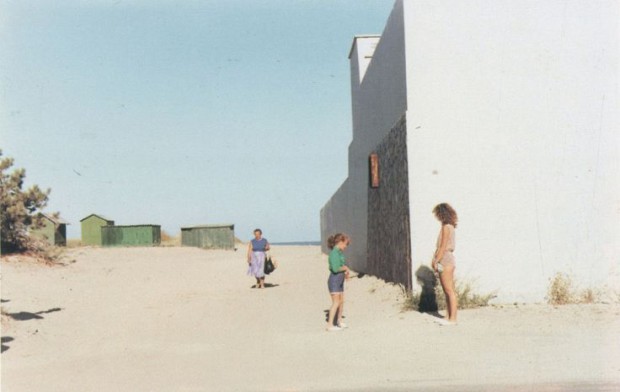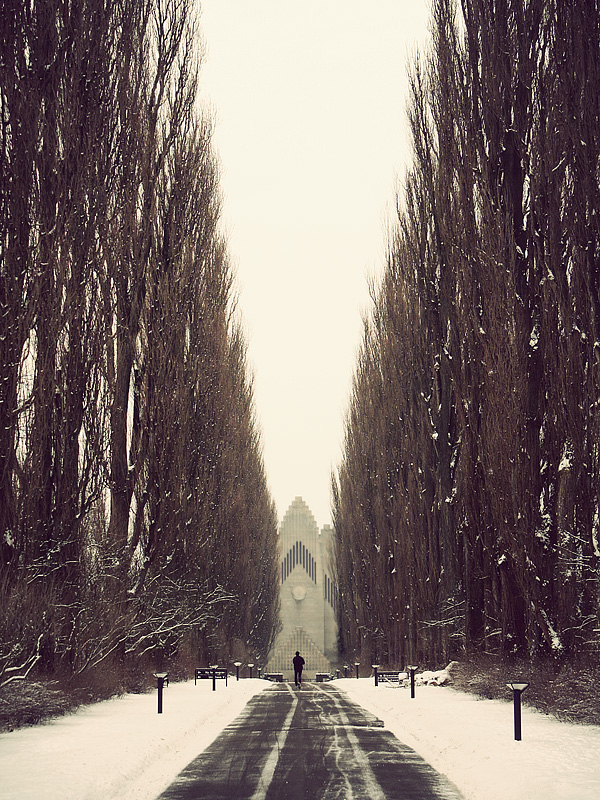Today we publish an article written by Nathan Romero Muelas, a Spanish architect living in Denmark for more than ten years now. The article has been published in the danish blog arkfo.dk
Immigration is setting Europe in a defensive mode, a state of mind that politically ranges from reluctance to paying lip service to universal solidarity. At the same time, we architects, and not only in Denmark, are busy again with questions of national identity and cultural legacy. Within academia and other architecture institutions, eyes are turning inwards to examine, for instance, all things “Nordic”. There are seminars galore on Nordic urbanism, or for example, on the possibility of a Nordic high-rise.
I’m interested in the timing of these two phenomena. Introspection is important. I guess societies, like human beings, need periodic diving into the oracular “know thyself “ of the Greeks. It usually happens when they feel questioned, or under pressure. I would like to know if this insistence in what we are, (Nordic or whatever), shares this menaced condition.
There have never been so many foreign architects and architecture students, working and living in Denmark. However, how different the situation, the mood, from not yet fifteen years ago, when I first arrived in Denmark. The Europan competition, the Erasmus program: Europe seemed open and enjoying, if I’m not mistaken, a moment of expansive optimism. Today foreigners populate our studios, working as interns mostly, in economic conditions at times worse than their Danish peers. They resemble more the southern immigration of the sixties, a working force that for some threatens the professional establishment, the architectonic version of the very publicised Polish travelling construction workers in Denmark.
COULD THERE BE, I WONDER, A RELATION BETWEEN THIS IMMIGRATION WAVE, MOTIVATED NOT ONLY BY CURIOSITY, BUT ALSO NECESSITY, AND THE URGE OF PROFILING AND BRANDING A NATIONAL OR REGIONAL ARCHITECTURE? BRANDING IN THE COMMERCIAL SENSE (ARCHITECTURE POLITICS) BUT ALSO IN THE ORIGINAL LIVESTOCK SENSE: TO TELL THIS CATTLE FROM THAT CATTLE.
But home is best
In a refreshing essay, (“Drømmen om de smaa samfund”, 1977), Steen Eiler Rasmussen lucidly demolishes the myth of a well functioning small society. He remembers a priest during the German occupation of Denmark. After having spent some time at the Frøslev concentration camp, this priest praised emphatically the experience in the camp. It was a humane experience he wouldn’t have liked to miss: under a common pressure, facing a common enemy, solidarity, mutual care and….a certain cosiness (“hygge”), flourished!
The Biannual competition Europan, with all its limitations and flaws, is a visionary idea, the perfect antidote to nationalist architecture. In the next edition, Denmark has decided not to participate. I imagine there are well founded motives, and surely unrelated to my reasoning here. But let me propose a perverse motive, for argument´s sake: the outcome of Europan is uncontrollable, in principle everybody can win. There follows a compromise, (sadly a weak compromise, in some countries), to build the winning project. Now, let’s say a Chinese architect wins. Frankly folks, what can a Chinese architect possibly know about the arcane secrets of Nordic light? And more importantly: where do we fit this Chinese in the promotion politics of Danish architecture?
Soil, blood and onions
Ever since I arrived to Denmark I have had the unsettling words of the Spanish architect Jose Antonio Coderch at the back of my mind. In 1960 he wrote an essay-manifesto, which was interesting, coming from the most individualist of architects. Its title was It is not geniuses we need know. In it, he wrote: “Let architects work with a rope tied to one leg, to stop them from staying too far from the earth where they have their roots, and the people they know best”. It made then a lot of sense: facing the all pervasive international style, it was a call for attention to the remainder of local building traditions but also hints at the idea that the artist, the architect, should only talk about what he knows well. And that meant then his origin. Despite of his connections to the Smithson’s, his belonging to Team 10 and winning the Milan Triennale golden medal in 1951, Coderch never really left Barcelona. But today I would argue that the exception is an architect that spends his entire life in the place he was born.
I go back to Altea, the Mediterranean town where I was born. I haven’t been here for a long time. Instantly upon arrival, I realize I’m home. That is, my body does. It remembers. The pine trees, the agave, the hills. And, yes, the light, different from any other, and very dear to me. But then I realize that I have spent more time in Copenhagen or Madrid than in Altea, which I left at thirteen. What does it all mean for an architect? Geography, “soil and blood”, I mean. Is it destiny?
I start thinking about notions like Mediterranean, and then Nordic. These are rich, multilayered concepts, and deserving all the scholarly attention they can get…provided we understand that we will not find a single valuable work of architecture that is pure, that isn’t changed, enlivened by the crossing of frontiers. Jacobsen, Aalto, Asplund, Utzon, carry their Mediterranean experience all through their work. Sota, Fisac, Moneo, (who worked for Utzon), were in turn transformed by the Nordic lesson.
I GUESS I’M HINTING AT THE THOUGHT, FRIGHTENING POSSIBILITY, THAT IN AN INCREASING REFINING AND DEFINING OF A NATIONAL OR REGIONAL ARCHITECTURE, NOT JUST ACADEMICALLY BUT IN ORDER TO SELL IT, EXPORT IT, PROMOTE IT, BE IT BALKAN, TEUTONIC, MEDITERRANEAN, SOUTHERN OR NORDIC, WE MIGHT END UP WITH SOMETHING RATHER STERILE, OR ILL VENTILATED: IN SEARCH OF THE QUINTESSENTIAL IDENTITY, WE MIGHT FIND…REDNECK ARCHITECTURE.
Because despite my beloved Coderch and today’s pushers of national architectures, architects do choose now the soil they live and work on. Unlike onions.

